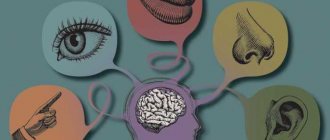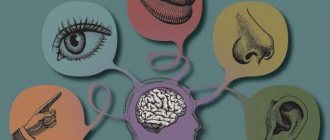The human psyche is one of the most complex creations of nature. Of course, it cannot always work perfectly, and some of its functions often do not work quite as they should, contributing to cognitive distortions and other perceptual phenomena. One of these phenomena is causal attribution - a property of the psyche that makes us draw incorrect conclusions about others and their motives. Today we will talk about what it is, how it manifests itself, how it is explained, and how it often affects our lives.
Misjudgment
When making judgments, a person very often makes mistakes. This is due to the fact that he usually underestimates external factors and the influence of the situation, but overestimates the personal capabilities of another individual.
This case is called the fundamental attribution error. This happens when the reasons are the same for both internal and external factors. The individual cannot make up his mind and a fundamental error occurs.
We recommend: What does acmeology study?
By indicating consequences and causes, we draw different conclusions. Also, our conclusions and explanations of reasons will be different depending on whether we like the other person or not.
- If an individual achieves success, then he will indicate his own qualities as the reason.
- The situation will be to blame for an individual's failure.
The phenomenon of causal attribution can be traced in the analysis of the behavior of a nice person and a not so nice one. A person makes a significant mistake when he finds reasons where he was looking for them. This means that if a person has already tuned in to a certain result, he will find it everywhere. If we intend to justify a person's actions, we will always find reasons to justify him.
And vice versa, if we decide to condemn someone, we will definitely condemn them by finding an appropriate reason. At the same time, only people with a developed sense of empathy will attribute responsibility. They tend to imagine themselves in the shoes of others, understand the feelings of strangers and try on other people's behavior patterns.
We recommend: Altruism is
Attribution is conjecture when analyzing someone's actions when there is a lack of information. In other words, we want to obtain data about our colleagues, interlocutors, or simply about a group of people based on some data that we have. If this data is not enough, then a psychological phenomenon called attribution arises. It can both reflect reality and distort it
This is very important to consider
Lee Ross experiment
The subject of this study, conducted in 1977, was the perception of others' intelligence. It turned out that we tend to overestimate it under conditions of social pressure.
Lee Ross recreated the events of his own life in an experiment. The exam he once had to take ended in failure for him: the examiners bombarded him with questions in which they themselves were obvious “experts.” Ross was in despair at his “ignorance” and in admiration at the “genius” of the examiners.
Six months later, he himself became a teacher and got the opportunity to “bring down” his students in the same way. One of them admitted that he experienced the same feelings during the exam as Ross did when he acted as the examinee.
After this, the psychologist decided to conduct a quiz experiment. The participants were divided into three groups: presenters, players and spectators. The first step was to ask the most difficult questions.
By the way, each of us can come up with such questions, based on our specialization. However, the quiz participants came to a different conclusion: they considered those asking questions to be much more erudite than those answering. Subsequent experiments showed that even very smart people are prone to similar conclusions.
A similar “halo effect” can be observed in life situations when we have to evaluate the intelligence of an interlocutor endowed with power. Usually such a person, be it a teacher, a boss or a high-ranking official, conducts a dialogue and asks “tricky” questions. We often attribute to him an outstanding intellect and feel an involuntary reverence for him.
Ross's experiments led to the following conclusions:
- people tend to attribute non-existent qualities to others based on individual aspects of behavior;
- It is impossible to form a correct judgment about a person based on one or more actions.
How are causal attribution and locus of control related?
Locus of control is the ability of the human personality to attribute successes and failures to the influence of external and internal factors. And it has some connection with causal attribution. In both cases, the individual does not want to see the true reasons for what is happening.
But there are a number of differences between the concepts. There are double standards at work in causal attribution. Locus of control encourages you to independently determine your reaction to what is happening around you.
And again the exam example. Here the locus can manifest itself in 2 ways:
- You blame yourself for a bad grade. You understand that you were poorly prepared, were inattentive, and irresponsible. Plus, you're ready for correction.
- You blame everything: the teacher, the subject, the wrong ticket.
Another difference between locus of control and causal attribution is the presence of willpower in the second phenomenon. Plus, it can be changed. You just need to get rid of the victim complex and learn to take responsibility.
Is it so important to understand each other?
Explaining the reasons for one’s own and others’ behavior is the key to the most important questions of social existence: who am I? who's near me? Can I trust others? What determines actions: personal properties or situations?
Knowing the correct answers to these questions allows you to:
- get rid of unnecessary negativity: anxiety, suspicion, panic;
- protect yourself from betrayal, meanness, manipulation;
- manage different situations;
- make rational decisions;
- predict behavioral patterns of others.
Comprehension of another person's experience, as he himself understands it, is the main goal of interpersonal interaction. This is an indispensable guideline when choosing:
- qualified specialists;
- candidates for political office;
- business partners;
- life partners.
It is not surprising that the study of attribution has long gone beyond the scope of social psychology. Today, the art of understanding is relevant for teachers, athletes, managers, for each of us. It allows us to adequately evaluate each other, interact effectively, get along with a variety of people, count on leniency and sympathy.
Goals and results of the study of attribution theory
In accordance with the mechanisms of causal attribution, methods for the practical use of the results obtained to influence the effectiveness of human activity, its motivation, emotions and goals are determined. The study of attribution helps to establish the moment at which team members assign or accept personal responsibility for their actions. The results are used to adequately assess the real contribution of a particular participant to the overall corporate activity of the group.
The theory of causal attribution was initially studied only within the framework of social psychology. Now it is used in general, pedagogical, developmental, and also in sports psychology. The main areas of study are self-perception, interpersonal perception, and the perception of a large volume of other social objects.
Casual attribution in psychology. Attribution Examples
This phenomenon exists because everyone wants to see the whole picture, to imagine all the events. But the problem is that the facts are not always known. And then the person begins to finish drawing, to think out the picture, bringing it to a logical conclusion. This process is carried out in accordance with existing life experience. Psychology has noted the diverse reactions of society to stereotypical and deviant behaviors. Let's look at an example.
The students are waiting for a new teacher to teach them history. If you ask them to describe their history teacher, then most likely the classes will be boring and uninteresting. And if you introduce them to another teacher, having previously described his teaching style (he uses visual models, arranges skits, does everything to make the lessons interesting), then the opinion about the person will be non-standard, different from the common habitual judgment.
Background
Gestalt psychologist Fritz Heider is often described as the early 20th century "father of attribution theory".
In a 1920s dissertation, Heider addressed the problem of phenomenology: why do perceivers attribute properties such as color to perceived objects when these properties are mental constructs? Heider's answer is that the perceptual attribute that they "directly" sense—vibrations in the air, for example—to an object, they interpret as conditioning those sense data. "The perceiver is confronted with sensory data and thus sees the perceived object as 'there' because they attribute the sensory data to underlying causes in the world."
Heider extended this idea of attributions about people: "motives, intentions, feelings... basic processes that manifest themselves in overt behavior."
Causal attribution in communication
To understand what the concept of causal attribution means, it is important to know when it occurs. It appears when unexpected obstacles arise on the way to joint activities - when difficulties and conflicts arise, clashes of interests and views
At the moment when all this happens, people apply causal attribution. In other words, we attribute the reasons for behavior to other people, and the more difficulties in interaction, the more seriously we approach the search for the reason.
An example of a causal attribution would be being late for a meeting with friends. Some of those waiting are sure that this may be due to the weather, another believes that a friend is late due to frivolity, and a third even doubts whether the late person was informed about the meeting place. So all friends have different ideas about the reasons for being late: circumstances, characteristics and character traits, the reason is in themselves.
application
Attribution theory can be applied to juror decision making. Jurors use attributions to explain the reason for the intentions and actions associated with a defendant's criminal behavior. The attribution made (situational or dispositional) can influence a juror's punitiveness toward the defendant. When jurors attribute a defendant's behavior to a dispositional attribution they tend to be more punitive and more likely to find the defendant guilty and recommend the death sentence compared to life imprisonment.
Mechanisms of attribution theory
The mechanisms of causal attribution are based on the following provisions:
getting to know each other in society, people are not limited to information obtained as a result of external observations: they strive to clarify the reasons for an action and formulate conclusions about personal qualities; Since the information obtained from third-party observation is often insufficient, observers identify probable causes of action and attribute them to the observed participant; the interpretation of reasons has a significant impact on the behavior of the observer.
The most significant results of the study were obtained as a result of studying the mechanisms of causal attribution. Installed:
· 1. systemic differences in a person’s explanation of his own behavior and the actions of other people;
· 2. deviations of the substitution process from logical norms under the influence of subjective factors (informational and motivational);
· 3. stimulating effect that has on a person’s activity and his motivation by explaining unsatisfactory results of such activity by the influence of external factors, and satisfactory results by the influence of internal factors.
One of the most common patterns of the theory is considered to be an overestimation of one’s own importance and an exaggeration of the role of certain factors (such as luck, luck, abilities) in shaping the situation.
Types of causal attribution
Depending on the angle from which the situation is viewed, the resulting result is determined. The following types are distinguished:
- Personal attribution. Attributing the causes of failure directly to the individual;
- Circumstantial. Blaming the circumstances;
- Object. The reason is in the object itself.
It is interesting that a person’s position determines the direction of his thinking. The participant himself most often blames the circumstances. The observer sees the motive for failure in the individual (participant). This happens because neither one nor the other imagines a completely plausible picture. It turns out that attribution is a subjective, and therefore often erroneous, opinion.
One more example. A shy guy finally decided to meet a girl. I thought about everything in advance, even rehearsed my speech. In general, he also raised his self-esteem. He meets her on the street, but for some reason she refuses the opportunity to meet her. The guy immediately builds all sorts of hypotheses. He thinks: “maybe it’s just me, maybe she doesn’t like me; maybe she’s just not in the mood,” etc. These thoughts can be either separately or come one after another.
At the same time, a correct understanding of the reasons for a person’s actions is very important for maintaining relationships between people. Contrived motives for behavior can be very different from real motives.
But it turns out that sometimes a person cannot ask, clarify some points and therefore is forced to use his imagination.
Meaning
Let's figure it out: what is attribution? Attribution is a process where people, given a small amount of information, draw conclusions about the reasons for a person’s behavior or events that occurred. But this doesn't always apply to other people. Most often, attribution is directed at oneself, when a person tries to justify or explain his actions by referring to various factors.
The concept and essence of attribution is to take personal action. Those qualities of an individual that are characterized are excluded from the limits of perception - in fact, they even seem to not exist. That is, we can give another definition of attribution - this is the characteristic that they try to create through intuition and some inferences. And, as a rule, attributing certain qualities to one or another individual does not always turn out to be correct.
Causal attribution is aimed at explaining the motives of behavior - both one's own and others'. It happens that you need to analyze and predict the behavior of a person, but there is not enough data for this. Therefore, the reasons and motives that could guide the object of attention are often guessed at.
We recommend: What does anthropomorphism mean?
This approach is also applicable to social groups when they are characterized, but there are no obvious motives for their behavior in the field of perception. Psychologists call this case group attribution. Group attribution also occurs when a group of individuals tries to explain their positive aspects by internal factors, while for an out-group they point to external factors as the reason. And vice versa, they attribute their negative moments to external factors, while in the outgroup they point to internal factors as the cause of the negative moments.
Attribution theory states that a person analyzes the behavior of other people depending on the reasons that he himself has intuitively identified. According to the theory, causal attribution is divided into two types:
- External.
- Internal.
The external type of attribution is the search for the causes of behavior among factors that do not depend on a person, that is, external factors. And internal (internal) is an explanation of the reasons for behavior based on one’s own psychological state.
Attribution theory implies a certain order of human actions:
- Observation of an object and its behavior in a certain situation.
- Based on assessments and personal perception, draw a conclusion from observing the object.
- Using this conclusion and the behavior of the object, attribute psychological patterns of behavior to it.
The concept and essence of attribution implies speculating about the reasons for people’s behavior, but this does not always correspond to reality. To be more precise, more often than not, the theory of causal attribution is not true.
Interpersonal attraction
Methods for determining the accuracy of perception (
from the lecture
):
- Expert review
- GOL (group personality assessment)
- Attraction (attractiveness, attraction) is an emotional component of interpersonal perception.
Interpersonal perceptual accuracy.
Personality tests, but, firstly, there are no tests to identify and measure all the characteristics of a person (hence, if a comparison is possible, then only for those characteristics for which there are tests); secondly, as already noted, tests cannot be considered as the only tool for studying personality, since they have certain limitations.
A similar problem arises when the method of expert assessments is used. People who know well the person whose cat is the object of perception are selected as experts. Their judgments about it (“expert assessments”) are compared with the data of the subject of perception. But even in this case, we essentially again have two rows of subjective judgments: the subject of perception and the expert (who also acts as a subject of perception, and, therefore, his judgments do not at all exclude the element of evaluation).
In experiments on interpersonal perception, four groups of factors are established: a) variables, with the help of a cat the subject of perception describes himself; b) previously familiar personalities; c) the relationship between oneself and the object of perception, and finally d) the situational context in which the process of interpersonal perception takes place. By correlating these four groups of factors, we can at least determine in which direction perception tends to shift in each specific case.
Arbitrary ideas about the connection between different characteristics of a person are called “illusory correlations.” These peculiar “stereotypes” are based not only on “life” experience,” but often on scraps of knowledge, information about various psychological concepts that were widespread in the past (for example, Kretschmer’s ideas about the connection between a person’s constitutional types and his character traits, ideas of physiognomy about the correspondence of facial features to certain psychological characteristics, etc.). A.A. Bodalev received very interesting data in this regard: out of 72 people he surveyed regarding how they perceive the external features of other people, 9 answered that a square chin is a sign of a strong will, 17 - that a large forehead is a sign of intelligence, 3 identify coarse hair with rebellious character, 16 - plumpness with good nature, for two, thick lips are a symbol of sexuality, for five, short stature is evidence of power, for one person, eyes set close to each other mean hot temper, and for five others, beauty is a sign of stupidity (Bodalev, 1982. P. 118).
No training can fully remove these everyday generalizations, but it can at least puzzle a person on the issue of the “unconditionality” of his judgment about other people.
Interpersonal attraction.
The area of research related to the identification of mechanisms for the formation of various emotional relationships to a perceived person is called attraction research. Attraction is both the process of forming the attractiveness of a person for the perceiver, and the product of this process, i.e. some quality of relationship.
Attraction can be considered as a special type of social attitude towards another person, in which the emotional component predominates (Gozman, 1987), when this “other” is assessed primarily in categories characteristic of affective assessments. In particular, the question of the role of similarity in the characteristics of the subject and object of perception in the process of formation of attraction, and the role of “ecological” characteristics of the communication process (proximity of communication partners, frequency of meetings, etc.) are being studied. Various levels of attraction are identified: sympathy, friendship, love. There are even two mutually exclusive theories of love: a pessimistic one, which asserts the negative impact of love on personality development (the emergence of dependence on a loved one), and an optimistic one, which asserts that love helps to relieve anxiety and more complete self-actualization of the individual. Love styles: passion, play, friendship, contemplation, obsession, selfless dedication.
Causal attribution - types and errors
Causal attribution in psychology shows various patterns that lead to errors of perception. People can explain their own failures and the success of others using situational attribution. Often we all try to treat ourselves more loyally and kindly than the people around us. To analyze your successes and the failures of others, personal attribution is used. An interesting fact is that the reason for success is often associated with one’s own merits, while failures can be blamed on circumstances. This is the peculiarity of the human psyche.
Types of causal attribution
When speaking about what causal attribution implies, it is important to remember its types. Psychologists call three types of causal attribution:
- Object causal attribution - a cause-and-effect relationship is attributed to the object to which the action is directed.
- Personal – attributed to the person who committed the act.
- Circumstantial - attributed to circumstances
Causal attribution errors
There are typical errors in causal attribution:
The tendency to overestimate the role of personal factors and the ability to underestimate the influence of the situation and circumstances. This error is typical for those who can be called observers. When assessing the behavior of another person, you can often see a certain pattern. So, in case of failures, they say that someone did not try very hard, or that people do not have enough abilities. When the result of the activity is successful, we can say that they were lucky. If we are talking about self-attribution, then the opposite trend can be observed, since its main goal is to maintain positive self-esteem. The fallacy of false agreement - a person tends to interpret his own behavior as typical, which is characteristic of many people. Error of different possibilities of role behavior - different social roles may imply different behavior
For this reason, during attribution, the perceiver interprets the behavior of others according to their social roles. Ignoring the informational value of what did not happen is a tendency to take into account exclusively obvious facts.
Types of attribution
When trying to interpret someone else's or our own behavior, we look for either internal (personal) reasons or external (circumstantial) reasons.
In accordance with this, two types of attribution are distinguished:
- Internal, based on personal qualities (willpower, determination, abilities).
- External, connecting actions with circumstances (favorable weather, luck, good fortune).
Research has shown that an observer of events most often uses the first type of attribution, a participant - the second. Neither of them has any idea of the real situation. This bias leads to subjectivity and erroneous judgments. Without taking into account this “fad” of our consciousness, we risk passing off prejudices as truth and constantly indulging in self-deception.









